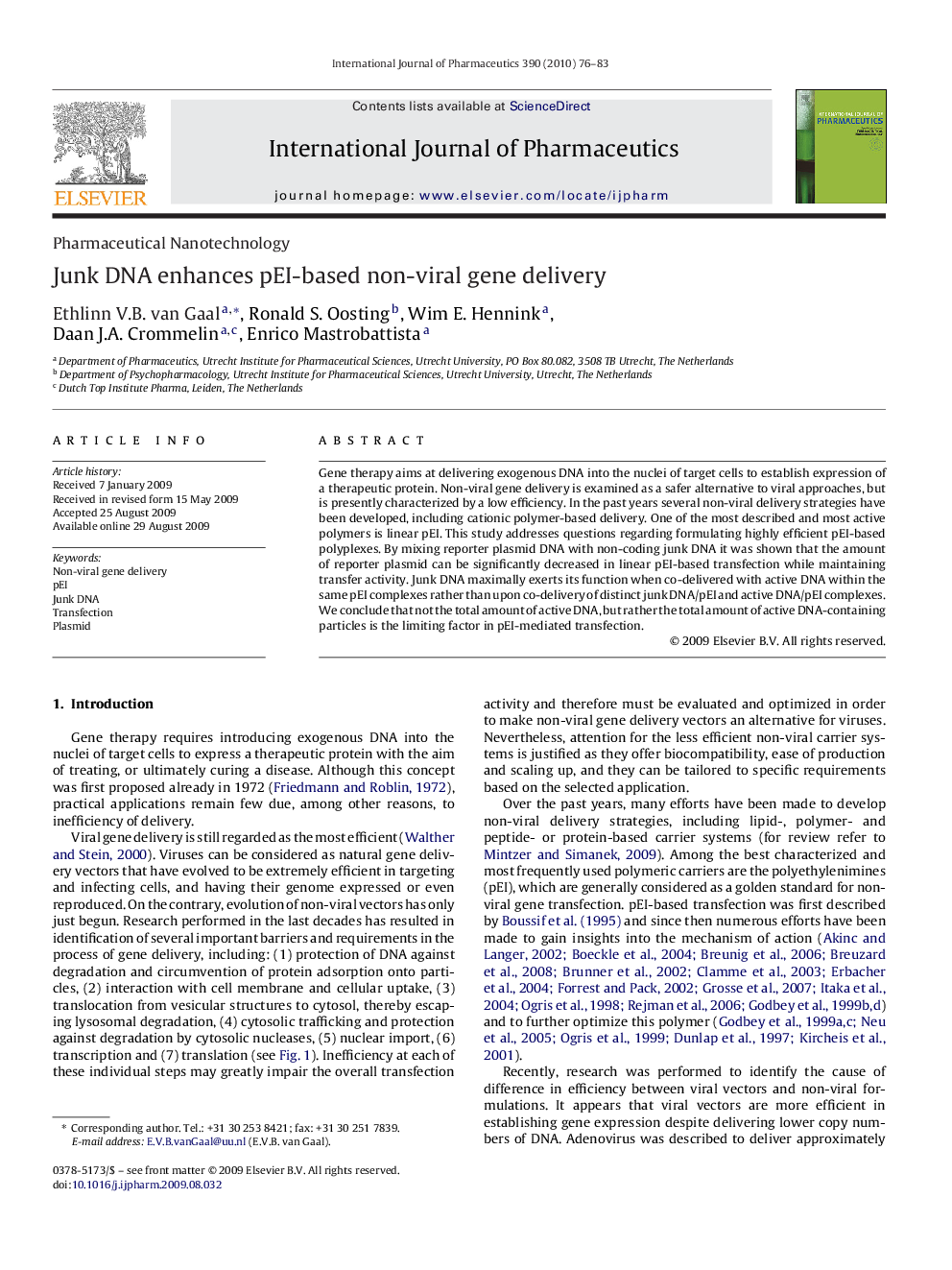| Article ID | Journal | Published Year | Pages | File Type |
|---|---|---|---|---|
| 2504195 | International Journal of Pharmaceutics | 2010 | 8 Pages |
Gene therapy aims at delivering exogenous DNA into the nuclei of target cells to establish expression of a therapeutic protein. Non-viral gene delivery is examined as a safer alternative to viral approaches, but is presently characterized by a low efficiency. In the past years several non-viral delivery strategies have been developed, including cationic polymer-based delivery. One of the most described and most active polymers is linear pEI. This study addresses questions regarding formulating highly efficient pEI-based polyplexes. By mixing reporter plasmid DNA with non-coding junk DNA it was shown that the amount of reporter plasmid can be significantly decreased in linear pEI-based transfection while maintaining transfer activity. Junk DNA maximally exerts its function when co-delivered with active DNA within the same pEI complexes rather than upon co-delivery of distinct junk DNA/pEI and active DNA/pEI complexes. We conclude that not the total amount of active DNA, but rather the total amount of active DNA-containing particles is the limiting factor in pEI-mediated transfection.
